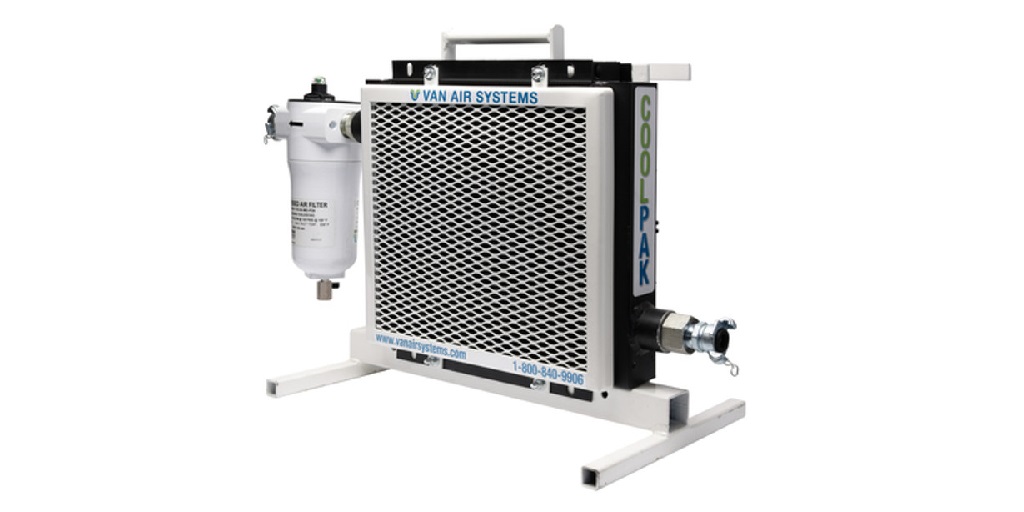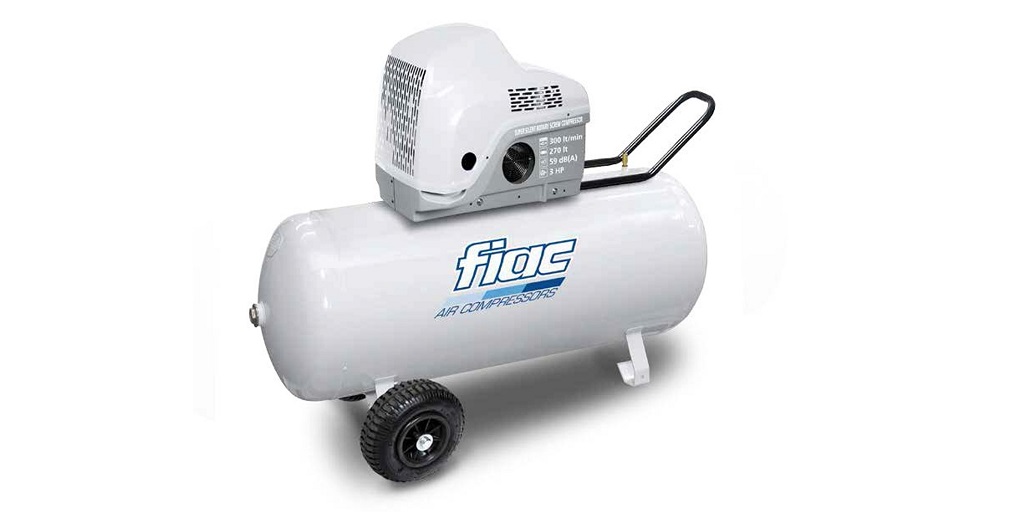
by tonystark | Oct 3, 2025 | Others
Personnel safety is never optional in a laboratory setting. When scientists, technicians, and engineers are routinely exposed to compressed air environments—especially in high-risk research or chemical processes—having a reliable breathing air system in place isn’t just a precaution. It’s an operational requirement.
Laboratories that use compressed air must address more than just functionality. They must ensure that the air provided for breathing is free of contaminants and safe for extended use. And that’s where a breathing air system proves indispensable.
The Hidden Risk of Oxygen Deficiency
One of the most serious hazards in labs using pressurized gas or chemical processes is oxygen displacement. In enclosed environments, even a small leak can reduce oxygen levels to dangerous thresholds without being detected by smell or sight. Oxygen deficiency can impair cognitive function, cause dizziness, or lead to unconsciousness—all before personnel realize something is wrong.
A high-quality breathing air system with integrated monitoring and filtration protects staff from these unseen dangers by ensuring a consistent flow of breathable, contaminant-free air. Whether you’re conducting experiments in an inert atmosphere or using gas cylinders for reactions, the risk of displacement must always be addressed.
Supporting Experimental and Process Accuracy
Contaminated or improperly filtered air does more than put staff at risk—it also jeopardizes the accuracy of lab work. Even trace amounts of oil vapor, carbon monoxide, or particulate matter can introduce unwanted variables into experiments or affect sensitive equipment calibration.
A dependable breathing air system contributes to experimental integrity. It separates the air used in processes from the air intended for breathing, ensuring neither environment compromises the other. For researchers working in pharmacology, biotechnology, or materials testing, this separation plays a critical role in maintaining reproducibility and eliminating background interference.
Meeting Regulatory Compliance Standards
OSHA (Occupational Safety and Health Administration), ANSI (American National Standards Institute), and other governing bodies have strict regulations for the use of compressed air in occupied workspaces. Breathing air used in laboratories must meet specific purity standards, and failure to comply can lead to penalties—or worse, accidents that could have been avoided.
Proper breathing air systems are designed to meet these standards. They typically include continuous CO monitoring, alarms for oxygen levels, and filter maintenance protocols that align with industry regulations. It’s not just about compliance—it’s about building a culture of accountability and safety in every lab setting.
Why Multi-Stage Filtration is Non-Negotiable
A laboratory-grade breathing air system incorporates a multi-stage filtration process to remove various contaminants at each stage:
- Particulate filtration: Removes dust, rust, and solid matter.
- Coalescing filters: Eliminate oil aerosols and water vapor.
- Activated carbon filters: Capture hydrocarbons and odors.
- Final bacterial filter: Ensures microbial cleanliness in breathing zones.
This stepwise design ensures that no single point of failure compromises the system. It’s especially important in high-stakes environments such as pharmaceutical labs or cleanrooms, where even microscopic pollutants can have consequences.
To learn more about designing or upgrading your lab’s air systems, visit Air & Vacuum Process Inc. online. Their team offers expert insight and proven solutions for laboratory-grade air safety.
For more information about Natural Gas Dehydrator and 50 Gallon Air Compressor Please visit: Air & Vacuum Process Inc.

by tonystark | Oct 3, 2025 | Others
When people hear the term quiet compressor, they usually think about comfort in a workshop or garage. But in certain industries, reduced noise levels aren’t just about convenience, they are essential to performance, safety, and customer trust.
From dental labs to food processing facilities, electronics assembly lines, and even recording studios, noise control is as critical as air pressure output. Let’s look at why.
Precision Meets Patient Comfort
In a dental setting, patient experience is everything. The traditional roar of a compressor can add unnecessary stress, especially when patients are already uneasy about procedures. A quiet compressor supports a calm environment, allowing dental professionals to communicate clearly with patients and staff.
There’s also the matter of precision. Technicians in dental labs depend on clear audio cues from their tools. A noisy compressor can mask subtle sounds, increasing the chance of mistakes.
Hygiene and Clear Communication
Food processing facilities are highly regulated environments where noise can complicate operations. Workers often rely on verbal communication for safety and coordination. A loud compressor forces them to raise their voices, which not only increases stress but also creates opportunities for miscommunication, potentially compromising both productivity and safety.
Moreover, a quiet compressor minimizes the need for bulky sound enclosures or added barriers, which can interfere with ventilation and hygiene protocols.
Protecting Sensitive Operations
Electronics assembly demands steady hands, sharp focus, and quiet surroundings. Excessive compressor noise can cause fatigue and distraction, making it harder for workers to concentrate on delicate soldering or circuit testing tasks.
In addition, many electronic components are tested in environments where vibration and noise must be minimized to prevent interference with sensitive instruments. A quieter system ensures both workers and testing equipment remain uncompromised.
Where Silence Is Golden
No industry highlights the importance of a quiet compressor more than recording. In studios, even the slightest background noise can ruin a session. A buzzing or rattling compressor in the next room can bleed into recordings, forcing retakes and wasting valuable time.
For these facilities, silence isn’t a luxury—it’s a business necessity. A properly designed quiet system allows musicians, voice artists, and engineers to work without distraction or interference.
The Lasting Value of a Quiet Compressor
Across industries, the benefits of quieter systems extend beyond immediate performance:
- Less stress, fewer headaches, and reduced long-term hearing risk.
- No need for expensive soundproofing or relocation of equipment.
- From dental crowns to microchips, less noise means fewer mistakes.
Noise control is about more than comfort—it’s about creating the right conditions for quality work.
Whether it’s the calm of a dental office, the strict hygiene of a food plant, the focus of an electronics lab, or the silence of a recording booth, a quiet compressor plays a vital role in making these spaces work as intended.
For facilities evaluating their options, it pays to look beyond horsepower and air delivery. Consider noise levels as part of performance. To learn more about compressors built for demanding environments, visit Air & Vacuum Process, Inc. online.
For more information about 50 Gallon Air Compressor and Compressed Air And Gas Filters Please visit: Air & Vacuum Process Inc.

by jamesmichael | Oct 3, 2025 | Others
Many crypto trading bots are available in the market today, but 2026 is set to bring a revolution with crypto sniper bots. These bots are designed to act faster than any other trading tool, spotting the best trades in seconds. With smart strategies and quick execution, crypto sniper bots make trading easier and more profitable for everyone. If you want to stay ahead in the crypto market, understanding these bots in 2026 is key. In this blog, we will explore how crypto sniper bots work and how they can help you win in 2026.
Understand the trade: what a sniper bot does
A crypto sniper bot watches for new token listings or liquidity events and tries to buy in the moment they appear. This gives an edge in memecoin launches and DEX listings, but it also brings risks like front-running and failed trades. Knowing how mempools, gas auctions, and on-chain confirmations work is the first step.
Make low-latency infrastructure a priority
Latency wins milliseconds. Run nodes close to validators or use reliable RPC providers with low response times. Consider private nodes, dedicated relays, and colocated servers to cut round-trip time. Also design the bot to batch and pre-build transactions where possible so it can submit instantly when a trigger hits.
Use smarter mempool monitoring and filters
Not every mempool event is a good trade. Build filters that spot real liquidity adds, detect honeypots, and flag unusual token code (like mint functions that let devs drain funds). Combine on-chain scanners with basic static checks on new token contracts so we only act on signals that pass safety rules.
Optimize gas and front-running defense
Gas strategy is crucial. Design adaptive gas bidding that balances cost with the chance to win the transaction slot. To avoid being sandwich-attacked or outbid, consider using techniques like private transaction relays (miner/validator relays) or bundle submissions when available. Strike a balance in gas bidding. Higher gas boosts inclusion chances but can quickly erase expected profits.
Implement strict security and access controls
A bot is only as safe as its keys and code. Store private keys in secure hardware modules or encrypted vaults. Limit API and RPC permissions, rotate keys, and log all actions. Regularly audit code and dependencies to close attack paths many losses come from simple misconfigurations or leaked credentials.
Backtest, simulate, and stage deployments
Backtesting on historical listings helps tune signal thresholds. Simulate various mempool and gas patterns, and run a stage deployment on testnets or with tiny capital before going live. Record every trade and outcome so we can measure which rules actually improve returns and which just add risk.
Keep humans in the loop
Automation should not mean no oversight. Build dashboards, alerts, and quick kill-switches. When a new exploit pattern appears, humans need to pause bots and push fixes. This mix of automation plus human review keeps operations safe and responsive.
Closing thoughts
Sniper bot is a powerful tool for both online auctions and cryptocurrency trading. Timing actions to the final second lets them secure items or exploit sudden price swings others miss. In auctions they improve win rates in crypto they place rapid orders from predefined signals to seize profits. koinkart leads in crypto sniper bot development, offering tailored bots with strict safety checks and monitoring tools. When crypto sniper bots rule the market in 2026, traders will notice their advantage and aim to lead the crypto market. Users must watch for code flaws, market volatility and platform limits careful testing and rules reduce risks and follow regulations always.

by freyaparker | Oct 3, 2025 | Others
When buying or selling a home, most people consider working with a real estate agent. Agents guide you through the process, handle negotiations, and help avoid costly mistakes. But the question many homeowners and buyers ask is: how much does it actually cost to get a real estate agent?
The answer can vary depending on where you live, the type of property you’re dealing with, and the level of service you expect. Understanding how real estate agents charge will help you plan your budget better and make confident decisions.
How Real Estate Agents Get Paid
Most real estate agents work on a commission basis. Instead of charging an hourly rate or flat fee, they earn a percentage of the property’s final sale price.
-
In the United States, the standard commission typically ranges from 5% to 6% of the sale price.
-
For example, if a home sells for $300,000, the agent’s commission may be between $15,000 and $18,000.
While this seems like a large amount, agents provide value through marketing, negotiations, and professional expertise. Often, a skilled agent can sell a property faster and at a higher price, which offsets their commission.
Who Pays the Real Estate Agent?
The payment arrangement differs for buyers and sellers:
-
Sellers usually cover the commission for both their listing agent and the buyer’s agent. The commission is split between the two professionals after the sale is finalized.
-
Buyers typically don’t pay their agent directly. Instead, the buyer’s agent receives their share from the seller’s commission.
This setup makes hiring an agent especially beneficial for buyers since they receive professional support without paying upfront fees.
Why Location and Market Matter
The real estate market you’re in can also affect the cost. For example:
-
Hot markets: In areas where homes sell quickly, commission rates may be more competitive.
-
Slower markets: Agents may charge higher rates due to the extra effort required to find buyers.
Choosing the Best Real Estate Agent in Galveston TX ensures you get fair pricing and guidance tailored to local market conditions. Local agents understand property values, neighborhood trends, and buyer demand better than anyone else.
Other Factors That Influence Costs
Apart from the sale price, several elements can impact how much you’ll pay for an agent:
-
Experience and Reputation – Experienced agents may ask for standard or slightly higher commissions but often deliver better results.
-
Services Offered – Some provide full-service packages including photography, staging, and marketing. Others may offer limited services at a lower rate.
-
Type of Property – Luxury or unique homes often require specialized marketing, which can raise costs.
-
Negotiation – Commissions aren’t always fixed. In some cases, you can negotiate the percentage, especially for high-value homes.
Types of Real Estate Agents
Not all agents serve the same role. Here are the main types you may encounter:
-
Listing Agents – Represent the seller and handle marketing, showings, and negotiations.
-
Buyer’s Agents – Help buyers find homes, arrange viewings, and negotiate purchase offers.
-
Dual Agents – Represent both sides of a transaction. While this can save costs, it may reduce negotiation flexibility.
Choosing the right type of agent for your needs is key to making the most of their services.
Can You Negotiate Agent Fees?
Yes, in many cases you can. Here’s how:
-
Ask upfront about commission flexibility.
-
Compare multiple agents before making a decision.
-
Consider the value of included services. Sometimes paying slightly more for a full-service agent can save money overall.
Negotiation helps ensure you get the best balance of cost and quality service.
Why the Right Agent is Worth the Cost
Hiring a professional may seem expensive at first, but the right agent can save you time, stress, and money. They manage complex paperwork, handle negotiations, and use their connections to market your property effectively.
For instance, Janke & Co Properties has built a reputation for guiding clients in Galveston with professionalism and dedication. Many buyers and sellers rely on their expertise to make informed decisions and navigate the real estate process with confidence.
Additional Costs Beyond Commission
It’s important to remember that commission isn’t the only cost when selling or buying a property. Other expenses may include:
-
Closing Costs – Fees for title services, inspections, and legal paperwork.
-
Marketing Costs – Professional photography, virtual tours, or advertisements.
-
Home Preparation – Repairs or staging to make a property more appealing to buyers.
Factoring these into your budget will give you a clearer picture of your total costs.
Finding a Reliable Agent
The best way to choose an agent is through research and personal interaction. Consider these steps:
-
Ask for recommendations from friends or family.
-
Check online reviews and past client experiences.
-
Interview at least two or three agents before deciding.
For homeowners and buyers in Galveston, working with the Best Real Estate Agent in Galveston TX means partnering with someone who knows the area well, understands local pricing trends, and can help you achieve the best deal possible.
Conclusion
The cost of hiring a real estate agent usually falls between 5% and 6% of the sale price, though the exact amount depends on your location, property type, and the services included. While this may feel like a big expense, the value of having a knowledgeable professional guiding you through one of life’s biggest financial transactions cannot be overstated.
By choosing a trusted company like Janke & Co Properties, you can feel confident that your interests are in good hands. With their local expertise, negotiation skills, and client-focused approach, they help make the buying and selling process smoother and more rewarding.

by construction | Oct 3, 2025 | Others
Solar strength isn’t always clearly a green dream—it’s a sensible and occasional value answer for residence owners trying to reduce prices and encompass sustainability. Across Texas, where daytime is considerable twelve months a year, residential solar panels have turned out to be one of the smartest investments for decreasing power payments while lowering property taxes. Choosing the right installer is a vital step, and knowing how will allow you to make a knowledgeable choice.
This manual breaks down the requirements of working with solar installers, highlighting modern estimating techniques, the importance of joint agreements which encompass NDAs (Non-Disclosure Agreements) and PAs (Project Agreements), and the extended-time period benefits of embracing solar.
1. Why Homeowners in Texas Are Turning to Solar Energy
Texas leads the dominion in solar functionality due to its extraordinary open regions and daily sunlight hours. Homeowners are increasingly understanding that solar energy is, in fact, an environmental choice but also a monetary one. With federal tax credit scores, neighborhood incentives, and awareness rebates, solar panel systems are more plentiful and less pricey than ever.

Key Drivers for Solar Adoption:
-
Lower Energy Bills: Solar panels extensively reduce month-to-month utility fees.
-
Incentives & Tax Credits: Programs, together with the Federal Solar Investment Tax Credit (ITC), lower upfront expenses.
-
Increased Property Value: Homes with solar panels often sell at a top fee.
-
Energy Independence: Solar structures assist in defending residential property against fluctuating power charges.
-
Sustainability Goals: A growing number of families prioritize lowering their carbon footprint.
For Texans, the sunny weather is more than simply an advantage—it’s an asset ready to be harnessed.
Many owners choose to rely on Residential solar panels and installers Texas because they deliver all the know-how and transparency.
2. Factors That Influence Solar Installation Costs
Understanding the rate of putting in solar panels is vital before starting your venture. While the sun has ended up with a lower rate in modern-day years, numerous factors determine the final charge tag:
-
System Size: Larger structures generate greater energy; however, they require better premature investment.
-
Panel Efficiency: High-performance panels supply higher ordinary performance; however, they may cost a little extra to begin with.
-
Roof Type & Condition: Complex roof designs or older roofing materials can boost hard work fees.
-
Inverter Type: Options like string inverters, microinverters, and hybrid fashions affect every charge and overall performance.
-
Battery Storage: Adding storage for added strength will increase expenses; however, it presents strength and safety.
-
Local Permits & Labor: Texas has various permit expenses and hard work prices depending on the vicinity.
Accurate rate forecasting relies on professional estimating, which is why many homeowners choose to operate with certified installers who can provide precise and accurate calculations.

3. The Middle Stage: How to Choose the Right Installer
The manner of finding the proper solar installer calls for more than genuinely comparing costs. Experience, reliability, and trustworthiness are recalled. In this degree, expert steering makes all the difference.
With expert estimates subsidized with the aid of the use of modern-day equipment, you avoid underestimating expenses or going through surprising delays. Moreover, NDAs ensure your personal and assignment records remain private, and at the same time, PAs certainly outline duties, timelines, and charge terms.
Checklist for Selecting the Right Installer:
-
Licensing & Certification: Verify credentials and country licensing.
-
Experience: Choose installers with a track record of achievement in residential projects.
-
Transparent Pricing: Ensure itemized estimates that cover substances, difficult work, and allowances.
-
-
Warranty Coverage: Look for warranties on each tool and workmanship.
-
Customer Reviews: Check for extremely good comments and references.
-
Legal Safeguards: Ensure NDAs and PAs are in place for safety and readability.
By combining cutting-edge estimating practices with criminal frameworks, proprietors defend their investment and regain peace of mind.
4. Long-Term Financial and Environmental Benefits
Installing solar panels is greater than just a one-time investment; it’s a long-term investment with passive 2returns for 5 years, the average lifespan of a solar panel, potentially thousands of greenback dollars.
Long-Term Advantages:
-
Energy Savings: Significant reductions in month-to-month bills add up over a few years.
-
Return on Investment (ROI): Payback durations generally range from 5 to eight years, and then financial savings are pure earnings.
-
Environmental Impact: Solar reduces reliance on fossil fuels and cuts greenhouse gas emissions.
-
Resilience: With battery backup, households can keep crucial systems running for an unspecified time in the future.
-
Market Appeal: Solar-ready homes appeal to environmentally conscious clients, boosting resale value.
By 2025 and beyond, as power prices continue to rise, making a funding investment guarantees homeowners are ahead of the curve.

5. Best Practices for a Successful Solar Project
Whether you’re starting small or installing a huge tool, following awesome practices guarantees an easy challenge:
-
Get Multiple Quotes: Compare at least three installers for price, issuer, and warranties.
-
Ask About Financing Options: Explore loans, leases, or energy purchase agreements (PPAs).
-
Evaluate Equipment Brands: Research panel and inverter manufacturers for reliability.
-
Understand Local Incentives: Maximize economic and financial savings by applying for rebates and tax credits.
-
Plan for Maintenance: Ensure the installer offers ongoing assistance and panel cleansing services.
-
Document Everything: Signed NDAs and PAs shield each domestic proprietor and installer.
With careful planning, your solar project becomes not just a price-saving measure but a clever, destiny-proof investment.
Final Thoughts
For Texans, making an investment in solar energy is low-cost. With sufficient sunlight hours, supportive incentives, and advanced estimating practices, residential proprietors have everything they want to make the switch with a bit of luck. The secret’s choosing the right installer who can offer not simply price-effective answers but additionally reliability, transparency, and prison safeguards through NDAs and PAs.
By going for walks with the proper accomplice, your sun assignment won’t truly strengthen your own home—it will empower your future with financial and environmental benefits for many years to return.

by freyaparker | Oct 3, 2025 | Others
The way people shop for groceries has changed a lot in recent years. Many households now prefer delivery services instead of going to the store. Grocery delivery brings convenience, time savings, and access to fresh products without leaving home. With so many services available, it can be confusing to know which one is the best option. Choosing the right grocery delivery service depends on several factors such as pricing, delivery speed, product availability, and the overall shopping experience.
In this article, we will look at what makes a grocery delivery service stand out, explore some of the most popular names in the market, and understand how customers can decide the right one for their needs.
Why Grocery Delivery Services Are Popular
Busy lifestyles and growing demand for convenience are two main reasons grocery delivery services have become so common. Instead of spending hours driving to the store, walking through aisles, and waiting in checkout lines, customers can place an order in minutes. This service is especially helpful for families, working professionals, and even seniors who may find it difficult to carry heavy bags home.
Another reason for the popularity is the variety of products offered. Most grocery delivery apps and websites provide access to fresh fruits, vegetables, dairy products, pantry essentials, and even household supplies. With easy payment options and scheduled delivery, the process feels smooth and stress-free.
Key Factors That Define the Best Grocery Delivery Service
When searching for the best grocery delivery service, several points need attention.
-
Delivery Speed – Fast delivery is one of the most important factors. Some services even provide same-day or express delivery for urgent needs.
-
Product Range – A wide selection of fresh and packaged goods makes a service more reliable. Customers prefer services that stock both local and branded items.
-
Pricing and Fees – Delivery charges, minimum order requirements, and subscription options matter. A budget-friendly service with transparent pricing usually ranks higher.
-
Ease of Use – User-friendly mobile apps or websites make ordering simple for everyone.
-
Customer Support – Good service ensures quick responses if something goes wrong with the order.
At this stage, it’s also worth mentioning that delivery is not just limited to groceries. Specialized companies have created reliable Store-To-Home Delivery in La Vista, NE, which shows how convenience is expanding into different industries beyond food shopping.
Top Grocery Delivery Options Available
There are many well-known grocery delivery services across the United States. Some of the leading names include:
-
Instacart – Known for partnering with a wide range of local and national grocery stores. Customers can choose from multiple retailers in their area.
-
Amazon Fresh – Offers fast delivery, especially for Prime members, and covers everyday grocery items with strong customer support.
-
Walmart Grocery Delivery – Budget-friendly prices and easy access to a large variety of products.
-
Shipt – Provides personal shopping experiences with trained shoppers who carefully select items for customers.
-
Kroger Delivery – Works well for customers loyal to the Kroger brand and its related stores.
Each of these services has its strengths. For example, Amazon Fresh focuses on speed, while Instacart provides variety by connecting with different stores.
How to Choose the Right Service for Your Needs
Not every delivery option will be perfect for every household. The decision depends on location, delivery speed, product quality, and overall budget. For families with children, a service with a strong selection of fresh produce might be more valuable. For busy professionals, quick delivery may matter most.
Another factor is consistency. Some services may work well in urban areas but not in smaller towns. Checking reviews and testing a service with a small order is often a good way to see if it fits your lifestyle.
It’s also useful to note that other delivery industries, such as logistics companies, are improving customer convenience in a similar way. For example, many users have found companies like Midwest Hot Tub Movers reliable for their specialty delivery services. Though they do not deal in groceries, their approach to secure and timely delivery shows how important trust and professionalism are when choosing any type of delivery provider.
Future of Grocery Delivery Services
Technology continues to play an important role in grocery shopping. Features such as real-time order tracking, subscription meal kits, and contactless payments are becoming standard. With demand increasing, more local businesses are also joining the trend by offering delivery in their areas.
For people living in mid-sized towns or smaller cities, delivery services are expanding access to quality products. Local partnerships make it easier for residents to receive fresh items without long travel times. Similar to how Store-To-Home Delivery in La Vista, NE makes life easier for customers, grocery delivery services are expected to keep growing in the same direction.
Conclusion
The best grocery store delivery service is the one that meets your personal needs. For some, that means the fastest delivery. For others, it’s about affordability or access to specific products. Services like Instacart, Walmart Grocery, and Amazon Fresh are popular choices, but the right one for you depends on your lifestyle and budget.
Grocery delivery has become more than just a convenience—it’s now part of modern living. By evaluating delivery speed, product range, and customer experience, you can choose the service that saves time and supports your household needs. As delivery options continue to grow, customers can expect even more flexibility and reliability in the future.









